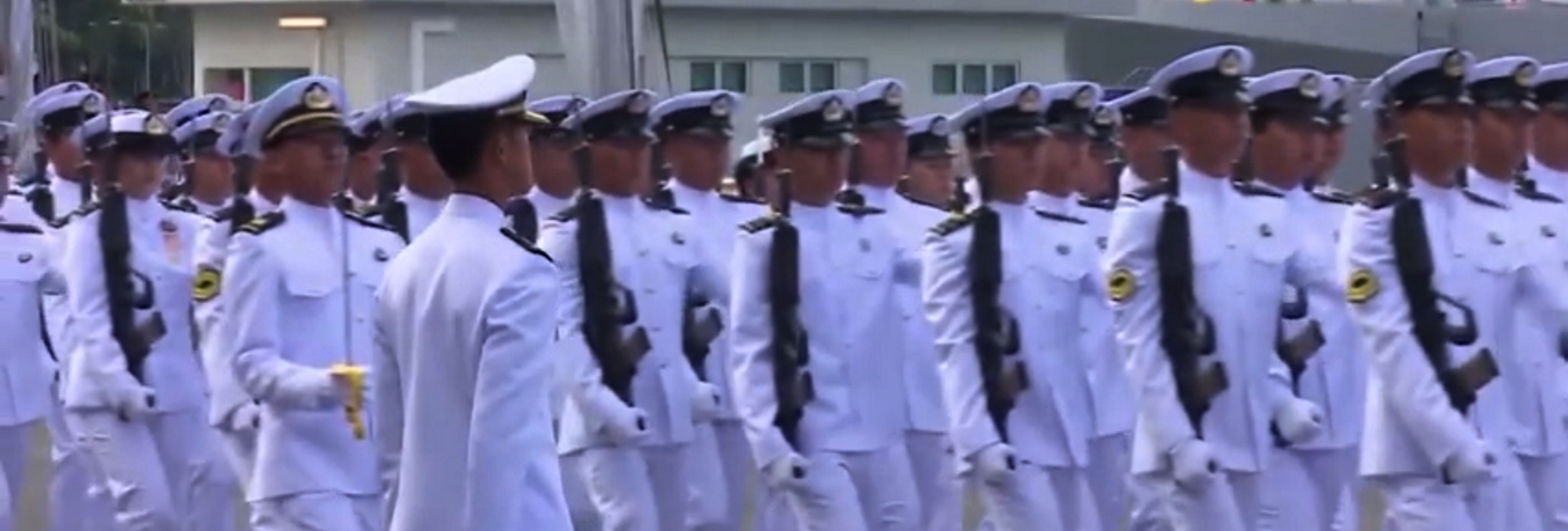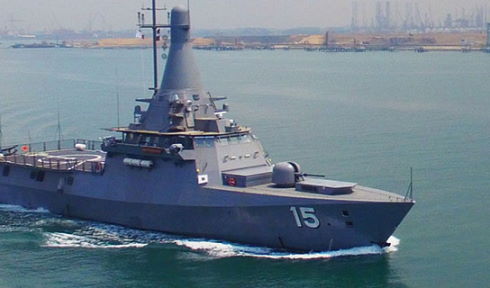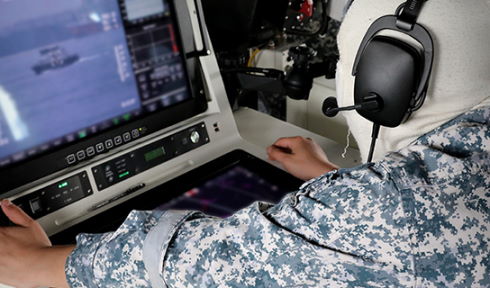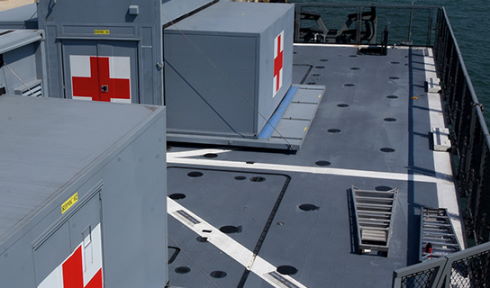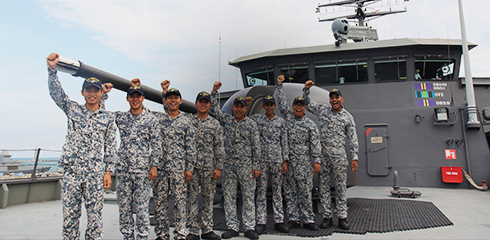The Littoral Mission Vessel (LMV) is ready for action. But first, she needs to stand in the spotlight for traditional commissioning ceremonies alongside her crew, as they go from a life of training, into real-world missions.
From the rigorous sea trials to the punishing waves of the South China Sea, the LMV Independence has survived it all. The crew, having gone through months of gruelling preparations and training, now operates as a single fighting unit. By all accounts, the ship and its crew have passed all the tests in flying colours.
However, before LMV Independence can formally become RSS Independence, thus making it part of the operational forces of the Republic of Singapore Navy (RSN), it has to be commissioned first. In the weeks leading up to the ceremony on 5 May 2017, the crew reflects upon the journey thus far and the preparations necessary to give LMV Independence her grandest moment yet.
The Final Countdown
Commissioning a ship is by no means a regular occurrence. Before 2017, the last commissions were held between 2007 and 2009 for the six Formidable class multi-role stealth frigates. In fact, for some members of the pioneer crew on board LMV Independence this is the first commissioning ceremony they have witnessed. It’s an exciting day, to say the least. “Our commanding officer SLTC Tay Choong Hern used to start every briefing with the milestones ahead,” ME3 Iris Leow recalls. “Like a countdown, he would remind us that it was a year to commissioning, or six months to commissioning, and so on. It felt like we were preparing for a wedding!”
With the ship passing her sea trials in April 2017, the crew has just one month to make sure that LMV Independence is literally looking her best for May’s commissioning ceremony. Prime Minister Lee Hsien Loong is slated for a tour of the ship on the day, so there are countless tasks, both big and small, still to be actioned by the crewmembers. For example, ME3 Leow and her communications team need to ensure that the flags adorning the ship are hung with millimetre precision. But even amongst the last-minute stress, she still finds time to look back with pride. "When [the ship] was in paper form, I had to use my own imagination. But now, with the whole thing coming to life, it is hard to imagine that I actually had a part to play in it. It's like 'Wow', you know?" she says with a laugh.
Inevitably, excitement gives way to impatience, as SLTC Chew Chun-Chau attests. “To be frank, leading up to all these key events, I sometimes just wanted it to be over and done with because it was such hard work.” Sleep is in short supply, but it’s all part of the process. As he sums it up: “Nose bleeding, sore throat, no rest!” However, looking back, all the hard work is worth it; to see the LMV at her very best. “When the national anthem played, that’s when the sense of achievement really hit me.”
The Day of Independence
Judging by the formalities, commissioning day is one of the most important milestones on a warship’s calendar. Proceedings begin with a series of parade commands by the parade commander, followed by the sound of boots hitting the docks in unison — boots belonging to the men and women of LMV Independence. This small yet proud contingent is clad in their No.1 uniforms. With their rifle bayonets gleaming in the morning sun like white spears, it is a sight to behold.
Once the contingent is in place, the Prime Minister reads and presents the commissioning warrant to SLTC Tay. The ship’s commissioning pennant, too, is presented and flown from the ships’ mastheads, which will remain there until the day the LMVs are decommissioned.
The final act involves the contingent singing the national anthem, followed by the Navy Song. It is sung at all major Navy events and, like a timeless creed, is etched into the psyche of every man and woman of the RSN. With the ships’ blaring horns echoing across the bay, this marks the end of the ceremony. The RSS Independence is officially ready for action.
Interestingly, this will be the third vessel to bear this name. The first RSS Independence was a patrol craft, and also the first ship that the Navy acquired after Singapore's independence in 1965. One of its most important missions was its deployment during Singapore's first terrorist attack in 1974. When terrorists detonated explosives at the Shell refinery complex in Pulau Bukom, RSS Independence was able to intercept the fleeing terrorists at sea.
Later, as Singapore became a major shipping hub in the 1990s, policy makers realised the need to boost the security of the city-state's main shipping lanes. As such, 12 Patrol Vessels were ordered, with RSS Independence being one of them. Aside from participating in major maritime exercises over the years, RSS Independence was most notably involved in enforcing Singapore's sovereignty over Pedra Branca during the dispute between Singapore and Malaysia.
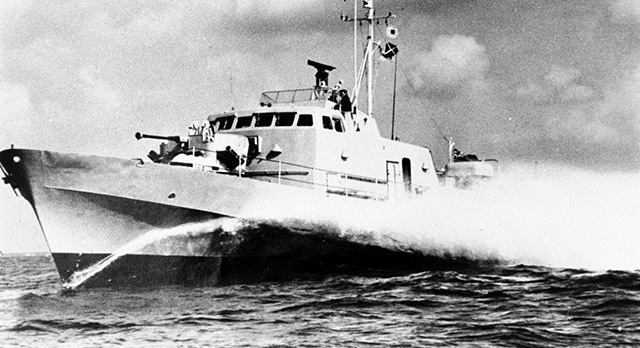
Patrol Craft P69
In 1973, RSS Independence rescued the crew of a flooded Italian merchant vessel.
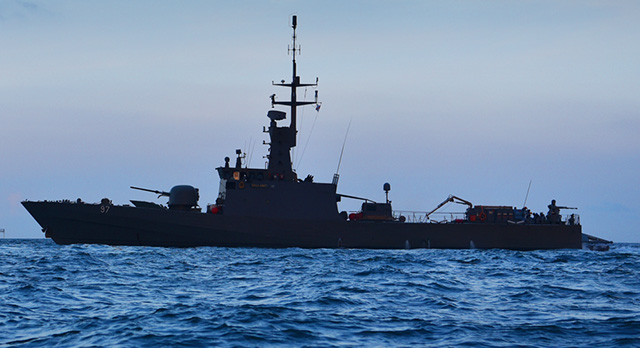
Patrol Vessel - 87
This was among the first major warships to be designed and built in Singapore.
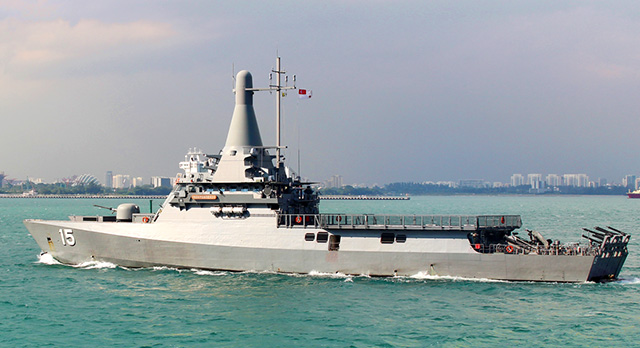
Littoral Mission Vessel - 15
Designed for flexibility, to mirror Singapore's progress as a Smart Nation.
New Beginnings
Receiving the commissioning warrant from the Prime Minister, then marching back to the newly christened RSS Independence — which the crew still lovingly refers to as ‘Indy’ — is a highlight for SLTC Tay. “Commissioning, as a CO, symbolically marks the phase whereby we focus on very different things thereafter as a warship. For the crew, it marks the [point] whereby the ship is now in the operational pool and will contribute directly to what we do to defend Singapore.”
For ME2 Kesavan, the ceremony marks a small yet special moment in his career. “I was enlisted in 2009 [and] I was with a patrol vessel from 2010 to 2014,” ME2 Kesavan says. “I have seen the LMV on paper when I visited the project office. So working with her, seeing her grow bigger day by day, I am very proud to say that I have worked with her, and that she’s ready to sail out.”
MAJ Eileen Sow, who took over as executive officer recently, shares that sentiment, “When we started off, there were maybe five people on this ship, and there were no fittings. It was just the hull form, and it was empty inside,” Major Sow describes. “So the commissioning is a very significant milestone for all of us.” Even though she had attended the commissioning of the Formidable class frigates before, this one, in particular, feels different, “The frigate was not my ship,” she added. “This one is.”
The crew are proud and ready to show the world how the LMV is the embodiment of a smarter, sharper, stronger navy. It’s a navy that is intelligent: like the LMV’s Combat Management System which can track threats, and even evaluate the best weapon to use against them. It’s a navy that is co-operative: like the LMV’s network-centric design, which allows it to not just track the movement of equipment and crew at all times, but to share its key information with other ships or military units.
Most of all, it’s a navy that is ready for the future. As the Prime Minister sums up in his words to the crew on commissioning day: “You inherit a proud history, and are entrusted with a vital mission. It is now your duty to sail the ships of the next generation navy, and keep Singapore safe and secure, in peacetime as in war. Onwards and upwards!”
Glossary of Missions
Older RSN ships were equipped to do a narrow range of operations well. But the Independence is mission-flexible — equipped to handle a full spectrum of tasks, thanks to its modular design:
1. Security Patrols
In time, RSS Independence will also be equipped with unmanned systems for covert surveillance operations, such as an unmanned aerial vehicle (UAV) and unmanned surface vehicle (USV). With a built-in landing pad, helicopter-based surveillance may also be carried out.
2. Incidents at Sea
These can range from accidents to piracy or smuggling. As such, RSS Independence is equipped with both lethal and non-lethal options to deliver calibrated responses to deter a wide range of threats. That includes long-range acoustic devices, water cannons, small- and large-calibre guns and anti-missile missiles.
3. HADR — Humanitarian Assistance and Disaster Relief
RSS Independence will participate in various humanitarian missions, both regionally and globally. The mission deck of the ship, in particular, may be converted to a temporary medical facility, allowing relief efforts to be conducted.


